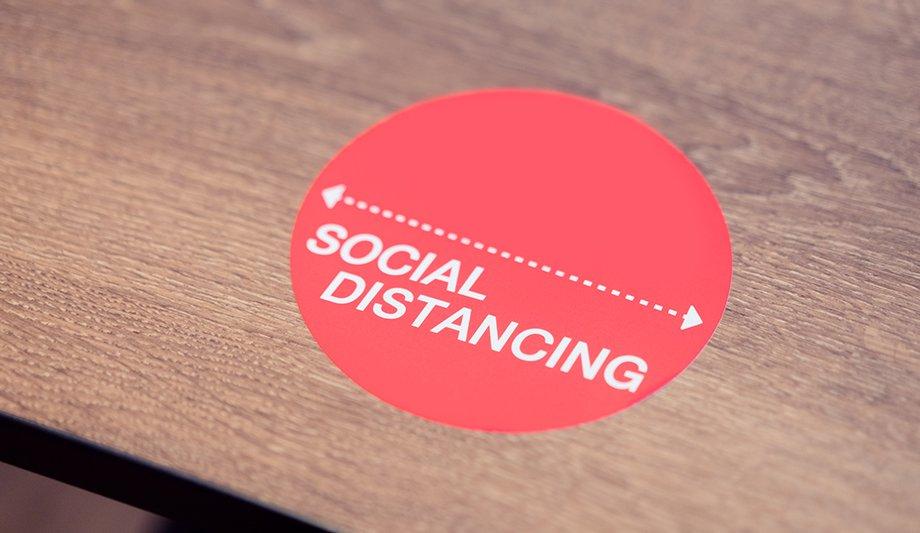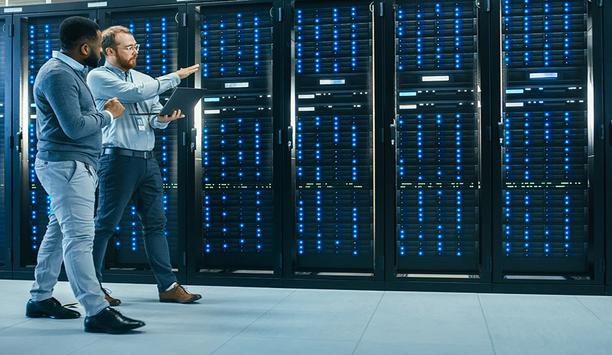Which new buzzwords reflect the security industry’s trends?
Editor Introduction
As an industry, we often speak in buzzwords. In addition to being catchy and easy to remember, these new and trendy industry terms can also reflect the state of the security market’s technology. In short, the latest buzzwords provide a kind of shorthand description of where the industry is - and where it’s going. We asked this week’s Expert Panel Roundtable: What new buzzword(s) rose to prominence in the security industry in 2020? (And how do they reflect industry trends?)
It goes without saying that the prominent buzzwords for 2020 were all pandemic-related. We saw most commonly - temperature checks, contactless, social distancing, etc. Unlike in years past, these buzzwords were not exclusive to the security industry, but the attention on touchless solutions only elevated the existing demand for quick and easy entrance into facilities. This attention on touchless - whether mobile credentials or AI-enabled biometric solutions - will continue to be useful long after the days of the COVID-19 pandemic as solutions perceived as hygienic are favoured by users and property owners.
Convergence is one of the top security buzzwords of 2020. As the physical and virtual worlds increasingly integrate, the resulting mass connectivity has left organisations at greater risk of both cyber attacks and physical security vulnerabilities unless they make some changes - and quickly. Cyber and physical security have traditionally operated in silos but now, convergence and unified solutions are a necessity. Convergence provides better security coverage with fewer human resources - an attractive financial boon for many organisations. But technology will not displace manpower; human interaction is essential to monitoring and response. Technology simply counterbalances its human counterparts so that all sides can communicate more efficiently. Convergence is already taking place, but unified solutions will become more critical in the years ahead as malevolent attacks become increasingly sophisticated.
Social distancing is the first catchphrase that comes to mind since it has created challenges and fostered the need for purpose-built analytics. AI and specifically machine/deep learning algorithms became important in 2020 to help operators see what is happening in real time. The need to search smarter and assist operations through object detection, accurately counting people and detecting masks grew exponentially as well. Remote working and distance learning also rose to prominence. Whether it is Zoom or MS Teams, remote working has changed the way we do business forever. Post pandemic, I believe people will continue to rely on these tools since they are easy-to-use. It’s no substitute for a face-to-face meeting, but not every meeting needs to be done that way.
As we have had to cope with the COVID-19 pandemic for nearly all of 2020, one of the most common buzzwords we hear is “physical distancing;” the need for individuals to physically distance themselves from one another in public spaces. However, humans by nature are social beings, which means we have had to find new ways to interact and communicate in all facets of our lives. For the security industry, this has meant a shift towards the use of touchless technologies, such as two-way audio solutions, especially for healthcare vertical. For hospitals specifically, these hands-free audio solutions can allow nurses to monitor and communicate with COVID-19 patients while still limiting their exposure. Fewer face-to-face interactions can help to reduce risk and PPE usage, along with anxiety and stress levels for healthcare workers.
We first started talking about “sidegating” in 2019, when we launched our latest optical technology to combat this, but it’s become even more relevant during the COVID-19 pandemic. Many will be familiar with the term “tailgating” - the act of following someone through an access controlled open door unauthorised - but “sidegating” is a new term for most. For us, this refers to the act of two people attempting unauthorised side-by-side dual entry through an entrance control system, and it only became relevant due to the advent of ever-wider turnstile lanes, designed for both pedestrian and particularly sports wheelchair users’ comfort. Now, preventing “sidegating” is important for more than just security reasons. Ensuring that people abide by social distancing guidelines, and knowing how many people are within your building at any given time to allow this to happen, has become a major concern for all organisations.
Not really "new," but the word intelligence comes to mind. Not only in the sense that the security industry saw an uptick in artificial intelligence-driven technology, but in the sense that the technology introduced truly provides more intelligence for an organisation. Manufacturers in the space have long been hyper-focused on providing products that meet a specific need, whether it’s video for protecting a facility, access control, intrusion, or fire alarms; but now, the driving force behind technological innovations is to provide more to users; more information, more data, more business intelligence - all derived from solutions aimed at providing physical security. But it's not enough to simply have a video camera to gather video. That video must provide insight beyond what can be derived from a single pane of view, and it goes back to the quality of this data.
Many new security buzzwords this year have revolved around the pandemic and subsequent battle to control the spread of the virus. “Occupancy management” and “track and trace” are prime examples, where access control has played a key role in providing better peace of mind for people as they return to work. However, some buzzwords have been less helpful. “Fever scanning” is an example of how marketing can be deceptive. It is better to address and discuss elevated temperature monitoring rather than trying to push thermal cameras as a panacea and catch-all, which they have proven not to be. “Contactless access” is interesting as it has brought technology that was already in the marketplace to the fore, such as mobile credentials, facial recognition etc. Perhaps the most overused buzzwords are “The New Normal,” which is a bit enigmatic - much of should have been done already to promote health and safety!
One buzzword is healthy buildings. During the COVID-19 pandemic, facility managers across verticals had to expand their definition of “security” to include occupant and overall facility health. From hospital administrators interested in updating their access controls to a frictionless system, to schools adding AI capabilities to their video surveillance cameras to enforce social distancing, this convergence of health and security could be found in facilities across the world. Creating a healthy building drives long-term success, including improved employee productivity, operational efficiency and infrastructure flexibility. As a result, we can expect leaders in security to continue to prioritise healthy spaces to provide their occupants with a safe and efficient building environment well into the new year.
The buzzword in the surveillance industry this year, next to AI, Cloud vs Edge and GDPR, was definitely “COVID-19 applications.” In recent years, we heard many leaders in the industry talk about AI applied in video surveillance, but the year 2020 is a perfect example of how AI is unexpectedly needed and how it can be deployed in a quick and flexible way on cameras. We were seeing a sudden deployment of COVID-19 AI applications on the edge. Facemask detection, social distance monitoring, crowd detection and specialist fever-detecting cameras are some of the examples. The industry needs flexibility and a platform that can grow with all the existing trends.
Though it is not a new term, the word “occupancy” has rose to prominence in the security industry and is now a commonplace concern for all industries to address. As integrators and customers alike reimagine use-cases for security technologies, the traditional functions of pre-existing technologies - such as video surveillance or access control - have increasingly expanded to include occupancy management. Across industries, it is the responsibility of businesses and facilities to ensure occupancy and social distancing regulations are being met to help mitigate the risk of COVID-19. Concurrently, during times of crisis, it is normal to see technology advancements accelerate. As such, the convergence of audio, analytics and video are currently benefiting in ways that were previously not deemed important, particularly when it comes to enforcing new occupancy management protocols.
Editor Summary
The security industry was treated to a new menu of buzzwords in 2020, courtesy of the COVID-19 pandemic. Terms such as "social distancing, "track and trace" and "occupancy management" became part of the industry vernacular in 2020, for better or worse. More familiar buzzwords also remained current in 2020, including artificial intelligence (AI), convergence, etc. As we look ahead to 2021, we can expect our industry's lexicon to continue to reflect a changing and challenging business climate - and "a new normal" (perhaps the ultimate buzzword for 2020 and beyond!).
- Related links
- Axis Communications Intruder detectors
- IDL Intruder detectors
- Johnson Controls Limited Access control systems & kits
- TDSi CCTV cameras
- TDSi Intruder detectors
- TDSi Access control systems & kits
- Biometric Access control systems & kits
- Infrared CCTV cameras
- Passive Infrared detector Video motion detectors
- Intelligent motion detection Video motion detectors
- Proximity Access control systems & kits
- Standalone / Networked Access control systems & kits
- Thermal CCTV cameras
- Wireless CCTV cameras
- Infrared Access control systems & kits
- Related categories
- CCTV cameras
- Access control systems & kits
- Intruder detectors
- Video motion detectors


















